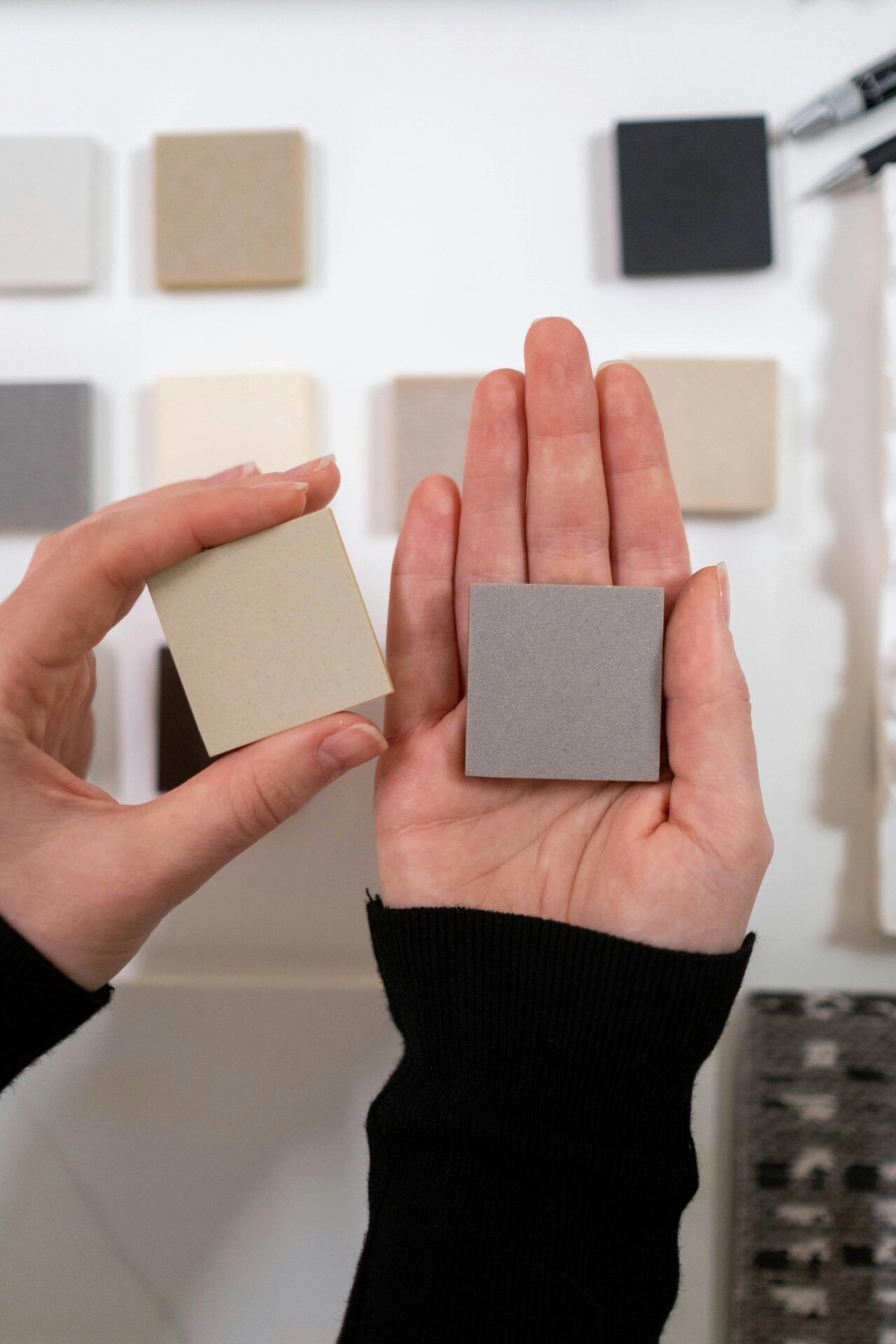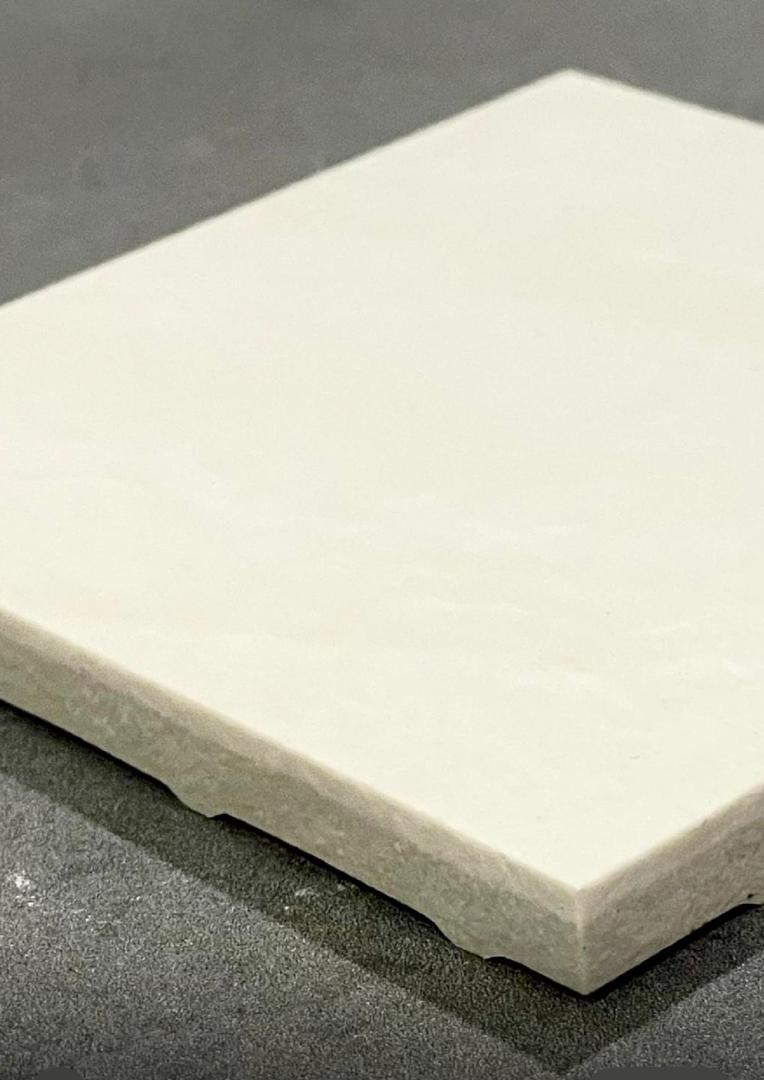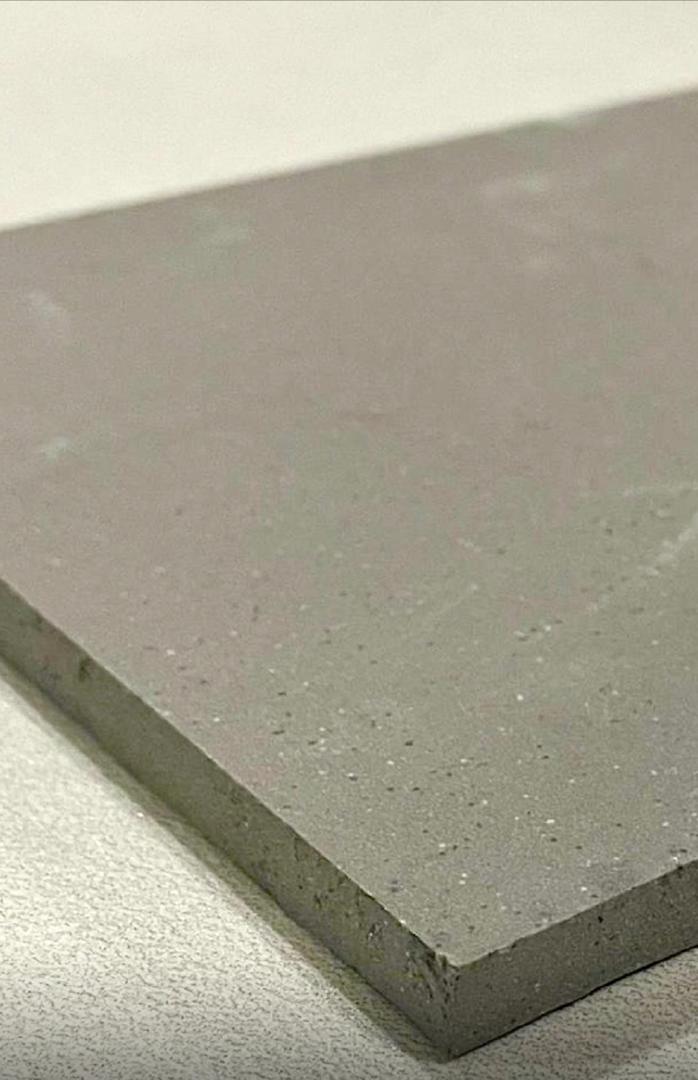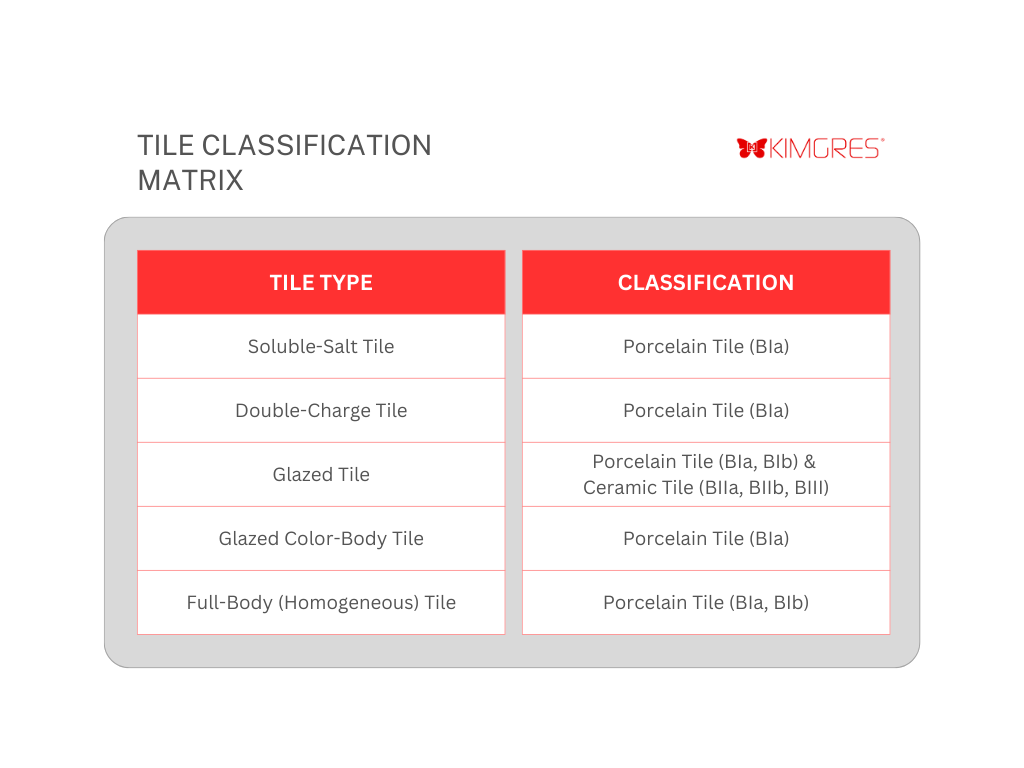Glazed vs. Unglazed Tiles

Tiles can be broadly classified based on their surface finish into glazed and unglazed categories, each offering distinct advantages depending on the application.

Glazed Tiles: Featuring a liquid glass coating that is fused to the tile’s surface during firing, glazed tiles offer brilliant colours, detailed designs, and a smooth, protective layer. This makes them highly resistant to stains and easy to clean. They are ideal for indoor walls, low-traffic floors, and decorative applications where aesthetics and easy maintenance are priorities. Glazed tiles also provide additional chemical resistance, making them suitable for kitchens and bathrooms.
Unglazed Tiles: Without a surface coating, unglazed tiles showcase the natural texture and colour of the tile body. They are exceptionally robust and dense, offering greater resistance to wear and slip in heavy-traffic and outdoor environments. Their through-body colour means minor chips are less noticeable. Perfect for commercial spaces, outdoor pathways, and areas where performance and durability outweigh decorative needs.

Choosing between glazed and unglazed tiles depends on balancing your design vision with the performance demands of the space. Showcase natural textures and robust durability, perfect for heavy-duty floors and outdoor areas.
Ceramic vs. Porcelain Classification

In Malaysia, most ceramic tiles are made using the dry pressing method and follow the MS ISO 13006 standard. This helps ensure that tiles are grouped based on their water absorption rate, which plays a big role in their strength, durability, and how well they perform in different spaces.

Group Bla (Porcelain Tiles): Highest durability
Ideal for heavy-duty floors, indoor & outdoor
Group BIb (Gres Tiles): Durable
Suitable for residential & light commercial floors
Group BIIa (Semi Gres Tiles): Moderate durability
Suitable for indoor flooring
Group BIIb (Semi Porous Tiles): Lower durability
Best for indoor residential use
Group BIII (Porous Tiles): Lowest durability
Suitable for wall use only
Popular Tile Types in Malaysia
Modern tile manufacturing has evolved to mimic natural materials like marble, granite, wood, metal, slate, terrazzo, and even fabric. These innovations provide sustainable alternatives to natural resources while maintaining cost efficiency.
To meet diverse application and market demands, tiles are categorized into several types:
1. Soluble-Salt Tiles
- Produced using screen-printing or roto-printing, where water-soluble metallic salts penetrate the tile surface (1-2mm deep) before firing.
- Cost-effective and widely used, often available in polished finishes.
2. Double-Charge Tiles
- Made by pressing two layers of powder and pigments together.
- The decorative top layer (3-4mm thick) sits above a basic clay body.
- More affordable than full-body tiles but has visible layering on the sides.

3. Glazed Tiles
- A thin layer of liquid glass is applied before firing, enhancing durability and aesthetics.
- Advanced digital printing technology allows for intricate designs and endless style possibilities.
4. Glazed Colour-Body Tiles
- Similar to glazed tiles but with a body colour that closely matches the surface glaze.
- Reduces the visibility of chips, creating a near full-body effect.

5. Full-Body Tiles (Homogeneous Tiles)
- Composed entirely of natural clay and colour pigments for uniform colour and texture throughout.
- Extremely durable, making them ideal for high-traffic and commercial areas.
- Often referred to as “Homogeneous Tiles” or “Technical Tiles” in Malaysia.
Tile Classification Matrix

Understanding the differences between ceramic, porcelain, and homogeneous tiles is crucial when selecting the right tile for your project. Whether you’re looking for affordability, durability, or aesthetic appeal, knowing how tiles are categorized by water absorption, production methods, and technical properties will help you make an informed decision.